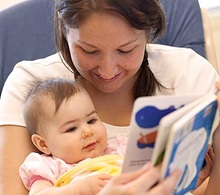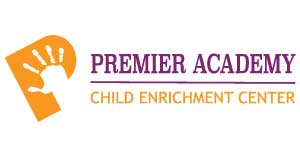 Reading to infants contributes to the development of their growing brains and gives them a good start towards a lifelong love of reading and good literature. When you read to babies, it can also help speech development as they are taking in information and beginning to learn about speech patterns. In addition, synapses connect between your infant’s neurons as you read aloud, positively affecting child development in many areas. Choosing a childcare that understands the importance of reading can set your child on the path to healthy development.
Reading to infants contributes to the development of their growing brains and gives them a good start towards a lifelong love of reading and good literature. When you read to babies, it can also help speech development as they are taking in information and beginning to learn about speech patterns. In addition, synapses connect between your infant’s neurons as you read aloud, positively affecting child development in many areas. Choosing a childcare that understands the importance of reading can set your child on the path to healthy development.
Infants tune in to the rhythm and cadence of our voices, especially the familiar voices of their parents and caregivers at your childcare. While initially the rhythmic phrase, “Brown bear, brown bear, what do you see?”, for example, may not hold meaning, your baby is taking in the sounds of language and how they fit together. As babies see a picture of a red bird in the book and you name the bird, they begin to make the connection between what you say and the picture of the red bird. The more you read that book, the stronger the connection. The repetitive storyline makes the book fun, engaging, and easier to remember. Reading to babies is not only a way to inspire a love of books from infancy, but also an important way to grow a baby’s vocabulary – first his understanding vocabulary and later her speaking vocabulary.
Best Way to Read to Your Baby
Of course reading aloud to an infant is different than reading aloud to a preschooler. With a baby, you may not get through the whole book. Your baby may want to hold the book and chew on it or try turning pages. All of these actions are appropriate and help your child become familiar with books and how to handle them.
- Make reading together a close cuddly time. Reading before bed may be the perfect time to hold your baby on your lap and cuddle together while you read.
- Don’t worry about reading a book start to finish. It is great if you can, but if your child wants to stop and hold or chew on the book, that is okay. That is another way infants take in information about their world.
- Point out and name pictures. Later ask your baby to find the “cow”, “horse”, etc., when you point to it.
- Increase the length and complexity of books as your child shows interest. By about one year of age, some babies will enjoy hearing a short book with a storyline.
How to Choose Books for Babies
Books for babies should be easy for them to hold and manipulate. Books in heavy cardboard (board books), cloth, plastic or even wood are popular and hold up to a baby’s use. If you have questions about age appropriate books, ask us at Premier Academy childcare for suggestions! Some recent favorites from the Growing Readers Books of Excellence and Notables include:
- Everyone Eats by Julio Kuo
- In the Garden by Elizabeth Spurr
- Little Mouse by Alison Murray
- Whose Toes are Those? by Sally Symes
- I Can Do It Myself by Stephen Krensky


